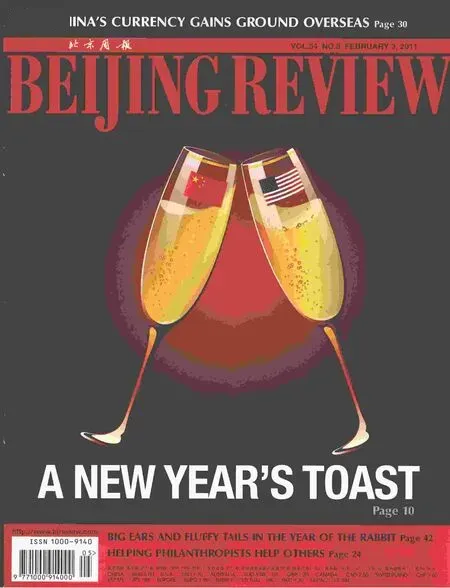A New Way To Give
2011-12-25ByWANGHAIRONG
By WANG HAIRONG
A New Way To Give
By WANG HAIRONG
At fi ve and a half years old, Heungkong Charitable Foundation is China’s oldest private foundation. It was formally launched in 2005 by Zhai Meiqing with a 50-millionyuan donation ($7.26 million) from her company, Heungkong Group.
Since its inception, Heungkong group has donated a total of 300 million yuan ($44.8 million). After 2005, it mainly donates money through Heungkong Charitable Foundation,which focuses on education, poverty and disaster relief.
Last year,Forbes Chinaranked the foundation third on its list of private foundations in China.
“My wealth is from society, so I should give back to society,” said Zhai, who rose to become one of China’s earliest millionaires from a furniture saleswoman early in 1988 when she was 24 years old. “Business and philanthropy are my careers, one makes money and the other gives out money where it’s needed and I feel happy that I can help others.”
Heungkong Charitable Foundation was registered on the same day China’s Regulations on Foundation Administration went into force on June 1, 2004. The regulations give a green light for individuals or businesses to set up private foundations.
Before the regulations, most charitable foundations in China were either set up or backed by the government, said Liu Zhongxiang, an of fi cial working on foundation management in the MCA.
Since the publication of the regulations,the number of private foundations has soared,said the Chinese Academy of Social Sciences in its annual report on China’s philanthropy published in November 2010.
In 2009, China had 846 private foundations, accounting for about 46 percent of a total of 1,843 charitable foundations in the country. The number was 32 percent more than that of the previous year, much higher than the 4 percent growth rate for public foundations during the same period.
Private foundations have not only grown in number and scale, but also in creativity.“They have made new contributions in discerning social needs, solved social problems and promoted social progress, said Yang Yue,an of fi cial with the MCA.
The emergence of private foundations marks the transition of philanthropy from sporadic and direct assistance to recipients to long-term planned charity, said Jin Jinping, Director of the Non-Profit Entity Study Center at Peking University Law School.
“They make charity more professional and institutionalized,” Jin said.
The institutionalization of charity enables rich people to set up enduring foundations that can outlive the founders themselves,said Jin. Although founders of some famous private Western foundations such as the Carnegie Foundation, Rockfeller Foundation and Ford Foundation have passed away, their foundations are still running under their initial missions, Jin said.
